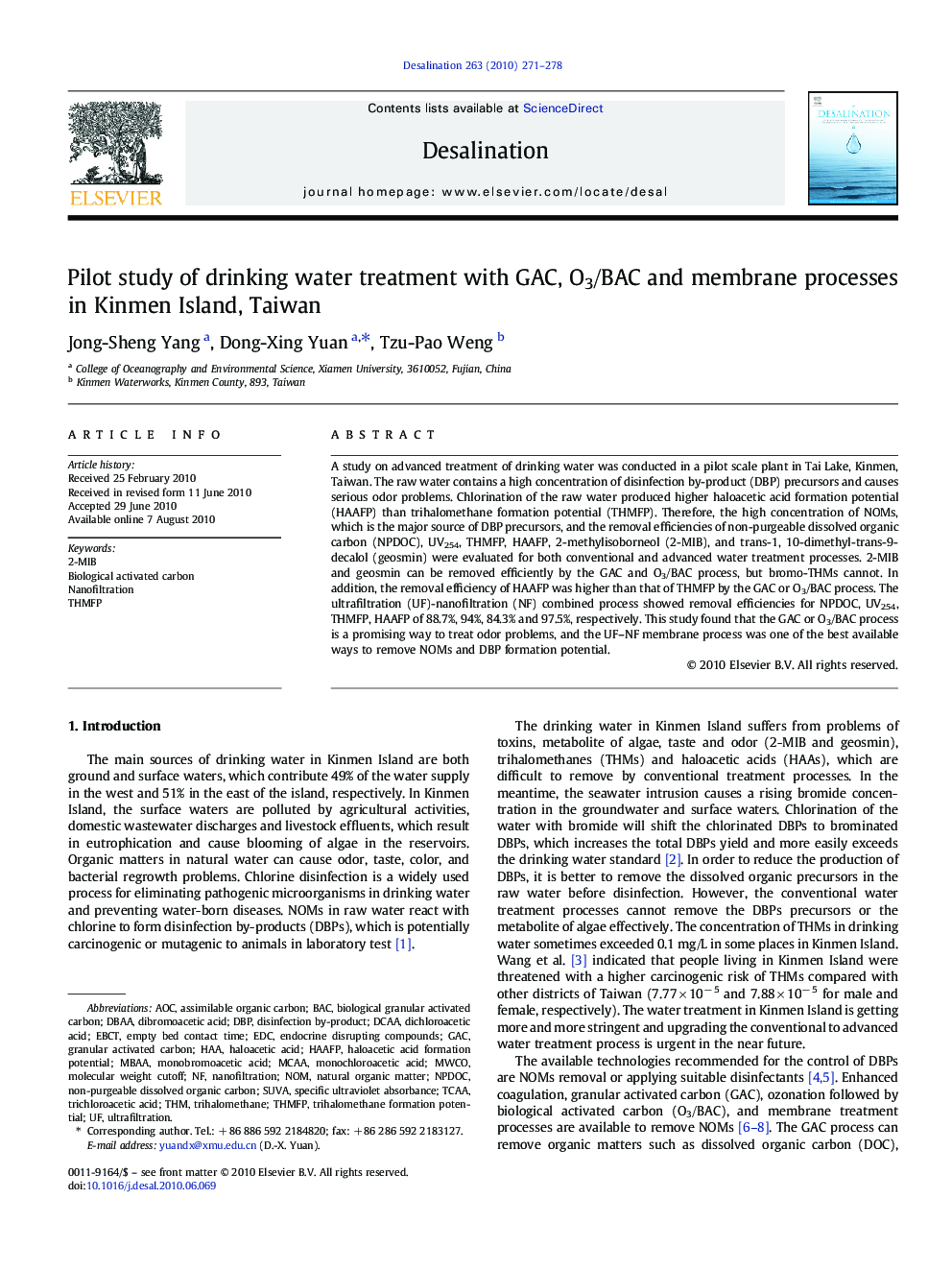| Article ID | Journal | Published Year | Pages | File Type |
|---|---|---|---|---|
| 625430 | Desalination | 2010 | 8 Pages |
Abstract
A study on advanced treatment of drinking water was conducted in a pilot scale plant in Tai Lake, Kinmen, Taiwan. The raw water contains a high concentration of disinfection by-product (DBP) precursors and causes serious odor problems. Chlorination of the raw water produced higher haloacetic acid formation potential (HAAFP) than trihalomethane formation potential (THMFP). Therefore, the high concentration of NOMs, which is the major source of DBP precursors, and the removal efficiencies of non-purgeable dissolved organic carbon (NPDOC), UV254, THMFP, HAAFP, 2-methylisoborneol (2-MIB), and trans-1, 10-dimethyl-trans-9-decalol (geosmin) were evaluated for both conventional and advanced water treatment processes. 2-MIB and geosmin can be removed efficiently by the GAC and O3/BAC process, but bromo-THMs cannot. In addition, the removal efficiency of HAAFP was higher than that of THMFP by the GAC or O3/BAC process. The ultrafiltration (UF)-nanofiltration (NF) combined process showed removal efficiencies for NPDOC, UV254, THMFP, HAAFP of 88.7%, 94%, 84.3% and 97.5%, respectively. This study found that the GAC or O3/BAC process is a promising way to treat odor problems, and the UF-NF membrane process was one of the best available ways to remove NOMs and DBP formation potential.
Keywords
HAAmonobromoacetic acidMBAAMCAAAOCEBCTDCAAMWCODBPGACDBAAEDCBACdichloroacetic acidmonochloroacetic acidDibromoacetic acidHaloacetic acidEndocrine disrupting compoundsEmpty bed contact timeDisinfection by-productMolecular weight cutoffNatural organic matterNOMNanofiltrationAssimilable organic carbonGranular activated carbon
Related Topics
Physical Sciences and Engineering
Chemical Engineering
Filtration and Separation
Authors
Jong-Sheng Yang, Dong-Xing Yuan, Tzu-Pao Weng,
